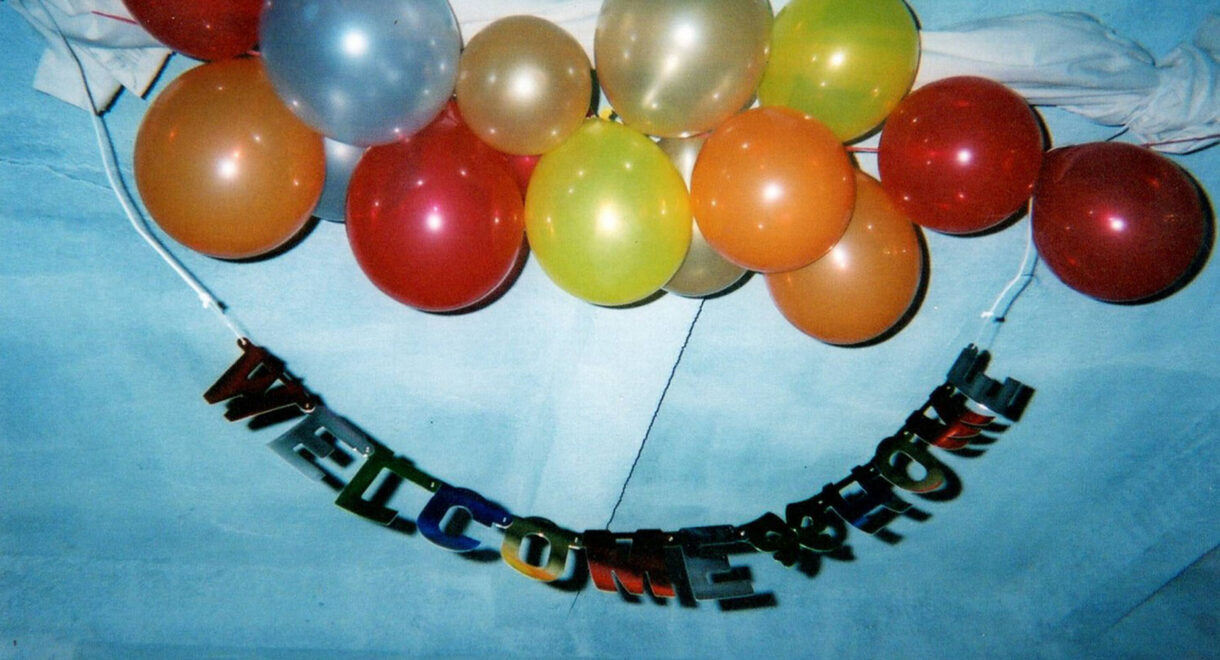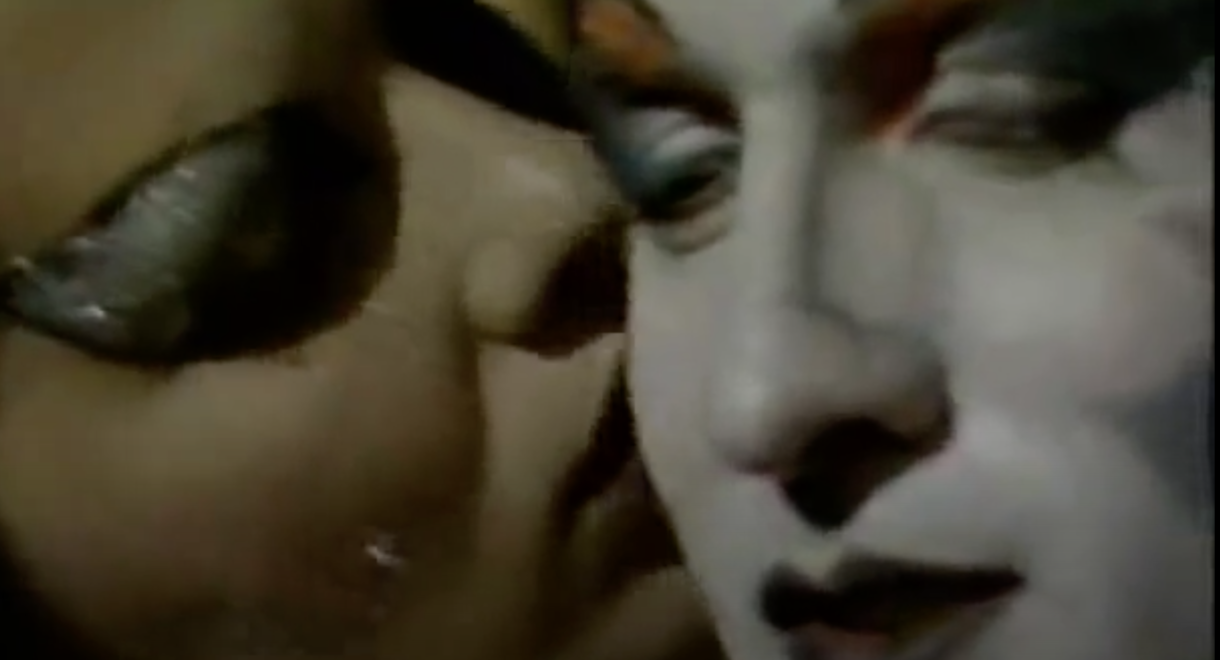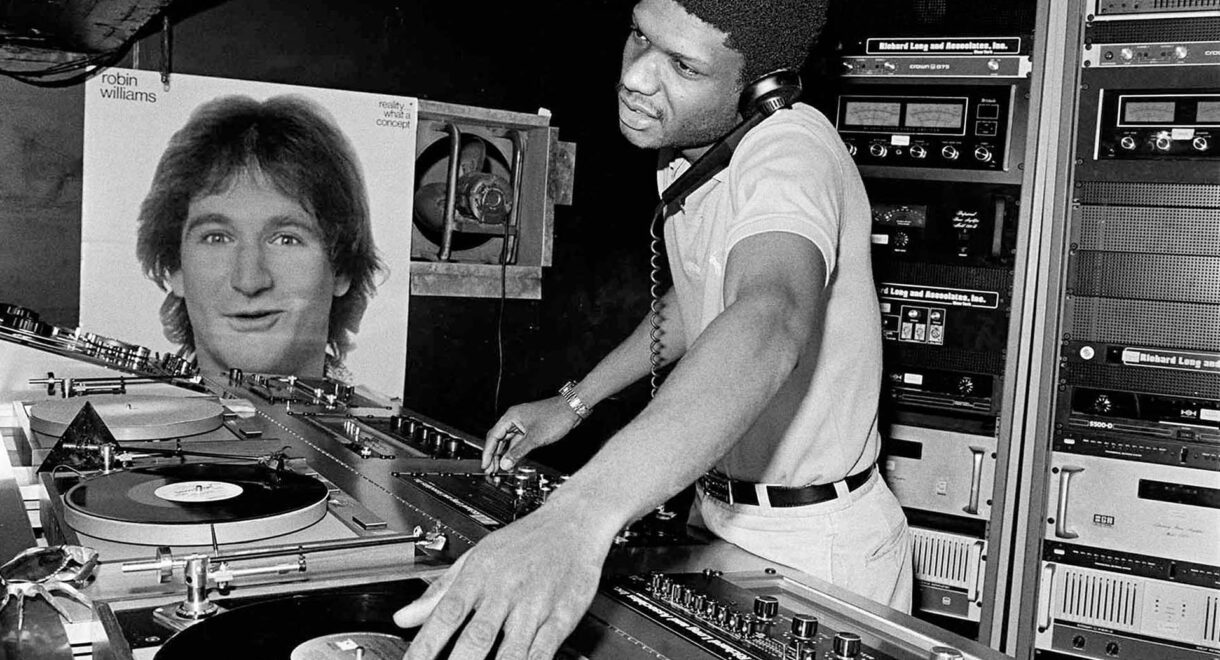Gelareh Khoie shares the story of thirtyninehotel, a legendary nightclub, art gallery, and performance space powered by Klipschorns from David Mancuso’s Prince Street loft parties. Love (Art & […]
Future Sounds of Napoli: In Conversation with Nu Genea

Neapolitan duo Massimo Di Lena and Lucio Aquilina aka Nu Genea join us to discuss their latest album Bar Mediterraneo.
In 1975, Napoli Centrale, a group founded by James Senese and Franco Del Prete, released their self-titled debut album on Ricordi Records. A mixture of Mediterranean roots and jazz rock, the album was the first of its kind to feature the Neapolitan dialect alongside Afro-American sounds and would become the cornerstone of an entire subgenre of Neapolitan music. Named after the main railway station in Naples, Napoli Centrale and artists including Pino Daniele, Toni Esposito, Tullio De Piscopo, and Enzo Avitabile came to represent the port city’s importance as a cultural meeting place; the continuous migration brought with it cross-collaborations, which created new, innovative sounds.
Heirs of that “Neapolitan Sound,” Nu Genea, aka multi-instrumentalists Massimo Di Lena and Lucio Aquilina, have furthered Napoli Centrale’s legacy by digging deeper into the local sounds of Napoli and collaborating with musicians from around the world. Their debut album, The Tony Allen Experiments, fused the afrobeat rhythms of Fela Kuti and Africa ‘70 with Neapolitan jazz, funk, and disco to worldwide acclaim. Nuova Napoli, the duo’s first album to feature vocals, expanded their sound to a full band that featured the city’s top musicians. Avid record diggers, the pair have also unearthed countless Neapolitan gems from flea markets across the area, and in 2018 collaborated with fellow selectors DNApoli and Famiglia Discocristiana to launch Napoli Segreta, a compilation series focused on rescuing and reissuing obscure and forgotten music made in Napoli from the ‘70s and ‘80s.
Nu Genea’s latest album, Bar Mediterraneo, envisions “a place where people meet and fuse together; an imaginary space that leaves its doors open to travelers and their lives, always exposed to the whims of fate. Some of this can be experienced through the multitude of sounds that come together in the tracks, layers of different acoustic instruments, voices and synthesizers merging in a unique musical blend.”
In Sheep’s Clothing’s Phil Cho spoke with the duo over Zoom about their latest album, daily life in Naples, Neapolitan classics, collaborating with Tony Allen, the local music scene, and more.
Hey Lucio and Massimo! Your music is obviously very inspired by Napoli. What’s a typical day like for you guys? Any favorite places, shops, food, etc.?
Lucio Aquilina: When we’re in Napoli, the seaside is everything. As soon as we wake up, we’ll usually try to go to the beach and rent a kayak. There are all these natural caves that you can enter with a kayak and it’s kind of an adventure in the city.
Massimo Di Lena: On a typical day, you’d go to a “salumeria,” which is like a small grocery store, buy a panino with mozzarella, tomato, etc., and take the kayak out to a rock to sit on while eating and putting your feet in the water. It might sound like a lot, but it’s something we actually do. In Naples, it’s pretty typical to take your lunch break on the beach or have a 50 minute nap on the sand. When we’re working, sometimes we don’t want to cook and waste time so we usually eat at one of those amazing places owned by an old grandma that’s been cooking for maybe 70 years. They have all these different appetizers and pasta, and you might eat so much that you end up being very tired and sleepy afterwards, but it’s worth it and it’s super cheap. We’re not big fans of fancy things. We just like local, cheap food.
L: Sometimes it’s recipes that are over 400 years old. They’ve been doing the same thing for so long, and maybe every ten years someone adds something to make it slightly better. For example, parmigiana di melanzane is a super nice aubergine kind of lasagna with no pasta dough, but it’s just slices of aubergine with some cheese and red sauce. Very simple. The way they do it here in Napoli is something really special.
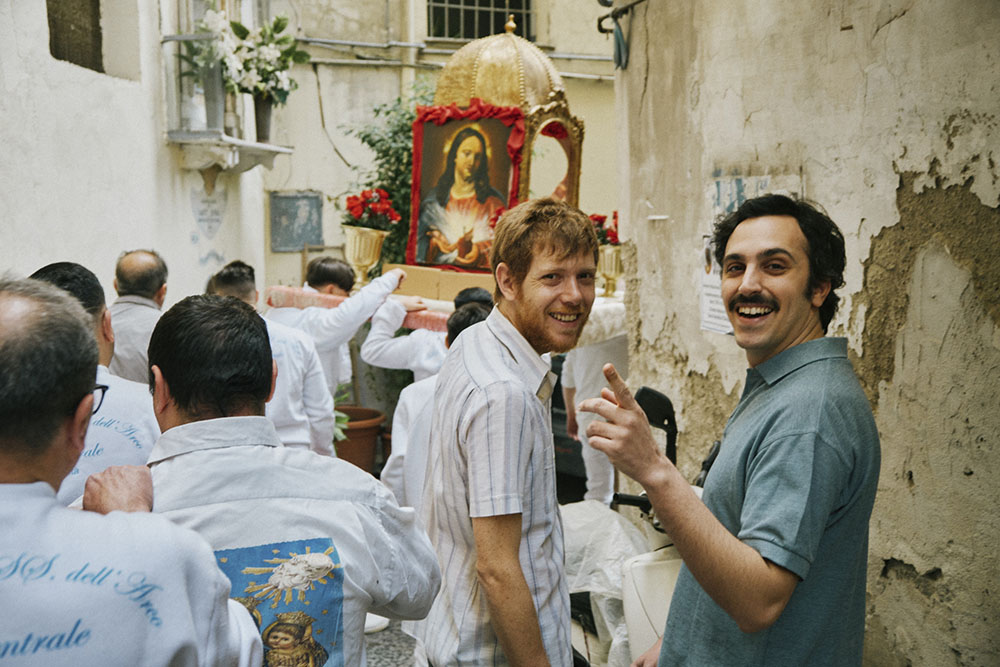
So you both grew up in Napoli? It seems like a place rich with many different cultures flowing in and of course music... Any key early musical experiences?
L: Well, Napoli being a port city in the center of the Mediterranean sea has always been a place of cultural and musical exchange.
M: Neapolitan dialect, food, and music, have basically all been shaped by its history and the encounter with other cultures. Some people say that we are like dogs that are not really of a pure race. We are like metiche.
L: We were probably five-years-old when we first heard early Neapolitan disco and funk, and that music subconsciously became part of our DNA. All families in Naples listen to Pino Daniele, one of the few Neapolitan musicians that also collaborated with people such as Chick Corea, Caetano Veloso and others. He did pop music with very intriguing arrangements and chord progressions.
M: Growing up, we started to realize that his and the music of a few more artists from the ‘70s, was very special as it was a new way to use the Neapolitan dialect in music. Previously, the Neapolitan dialect was typically only used in Neapolitan classical music.
L: Later on, we discovered how much musicality was flowing in the streets of Naples and started to experience amazing jam sessions where musicians came from different backgrounds, from classical to jazz music. They met in Naples to play with each other, but not like a typical jam where you just play standards. It was more free. Not only were the musicians from all different ranges, they also came from other countries. All different kinds of musicians would pass through Naples and go there to play.
At the end of the day, our vision is to mix our musical roots with other things that we love, and collaborate with people from different parts of the world.
In Stamp the Wax’s mini-doc Napoli Futura, the Mystic Jungle crew mentioned that there’s a real “Italian way of making music.” Do you share that idea and how would you explain it?
M: We don’t know exactly what the Mystic Jungle guys meant in the interview, but there’s probably something in the air… It’s a bit like when we speak of the Mediterranean. There’s something which is not really explainable in musical terms or a tangible sort of thing, but it’s more the air that you breathe. Maybe it’s the lifestyle – you eat certain kinds of food, you are close to the seaside, you live a life that’s maybe a bit different from other countries in the world… and this, in some way, definitely influences the inspirations and workflow when making music, or music we listen to on a daily basis.
L: There is also something common in the Italian way of making music. We are very romantic (laughs), so we put a lot of effort into writing melodies. The core part of our songs usually starts from a melodic riff. Most of the artists we love from the ‘70s, who released Italian music, always had very remarkable melodies, and this influenced us of course.
M: However, we also make “dance music” and rhythm is a very important component of our music. The Neapolitan dialect, on the contrary of the Italian language, has a very rhythmic flow, especially because the end of every word gets cut.
L: For example, in Italian we’d say amore or passione. In Neapolitan, it’s ammòr’ and passiòn’.
M: When we first started, after listening to a lot of Neapolitan music from back in the day, we realized that the rhythm in our language is also in the music. We figured out that by mixing the Italian romanticism of melodies with the rhythmic flow of the Neapolitan dialect, we could give more importance to the rhythmic part in our tracks. We also come from that world of DJing and electronic music, so all three of these components come together to make up our sound because each fulfills what the other is lacking.
Your previous album ‘Nuova Napoli’ looks to the past and was inspired by the music of Naples during the ‘70s and ‘80s. How does the new album differ in approach?
M: When we were living in Berlin, at one point we started to miss Napoli and began making Nuova Napoli, which was clearly referencing the music we were listening to years ago when we were going to flea markets and started discovering the records that we later compiled on Napoli Segreta. Nuova Napoli has more of a clear reference to that Neapolitan world of music, but while we were making that music, we were also trying to express other influences which then became the new album Bar Mediterraneo. At the end of the day, our vision is to mix our musical roots with other things that we love, and collaborate with people from different parts of the world. We want to experiment with how our Neapolitan dialect can mix with rhythms that are not already used with the Neapolitan dialect.
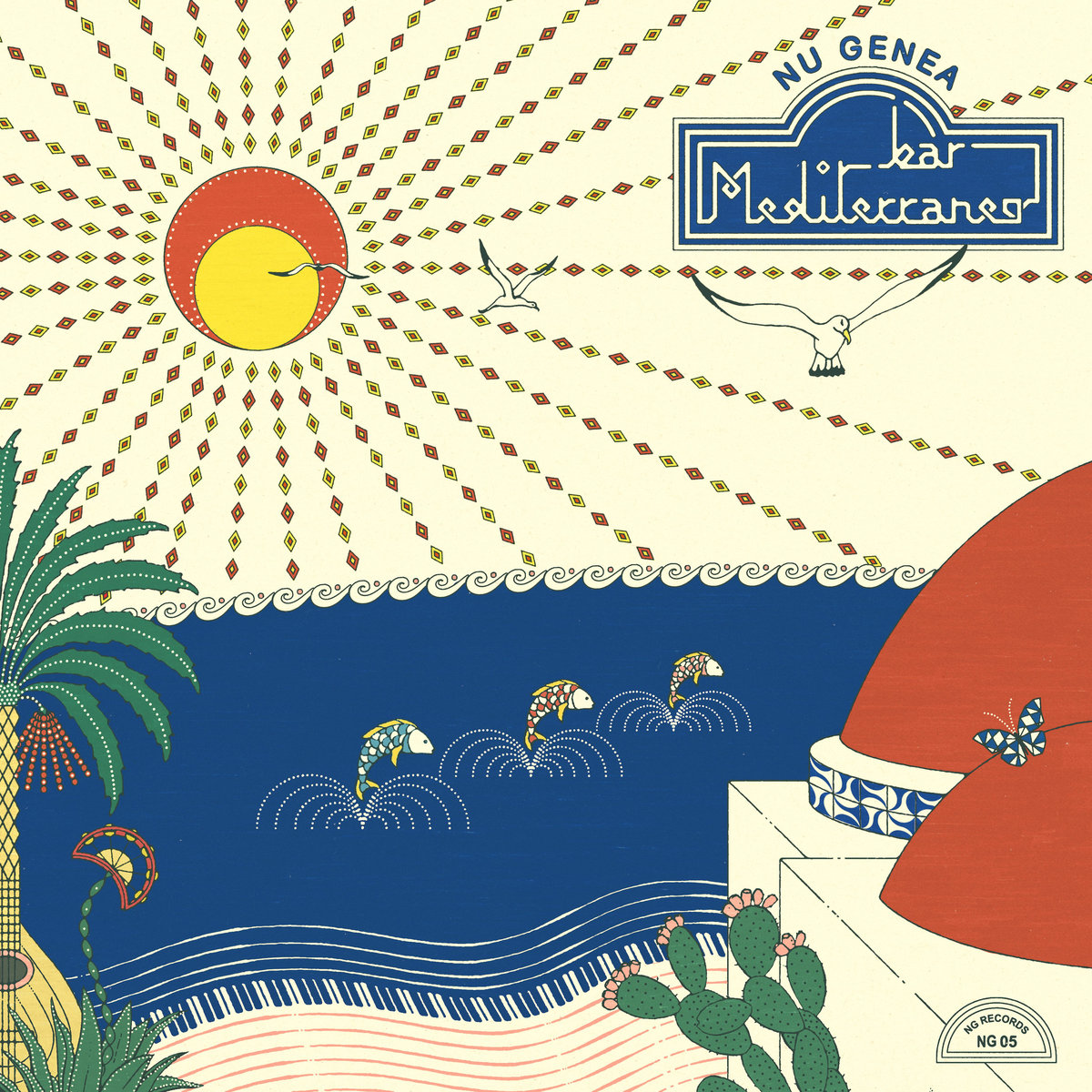
There’s also a specific concept behind this place, Bar Mediterraneo. Can you speak on that and how the idea formed?
M: In Naples, you often drink your morning espresso at a bar, standing directly at the counter. You don’t sit alone at your own table. This really creates random and interesting morning talks. We have met countless people and friends in this way. The title Bar Mediterraneo, comes from the idea of an imaginary bar somewhere in the Mediterranean, that’s really a place of encounter. A place made of collaborations where people’s lives encounter and fuse together.
L: We imagined this album to be listened to on a road trip in a car on the coast of the Mediterranean. This idea also came out of the fact that we have been listening and questioning what it means to be Mediterranean. It’s not just about the real location of the Mediterranean, but it’s also an idea, a sensation, something that we can feel, but we don’t really know how to define it exactly. So we try to define it through the music.
There are many incredible collaborators and players featured on the album. We’d love to know more about them and what it was like working with them.
L: There’s Marzuk Mejiri, who is this crazy ney flute player, singer, and also darbuka player. He’s from Tunisia, but he lived in Naples for the last 20 years, so now he also speaks Neapolitan a bit, but is really into his world. The collaboration was so inspiring for us because when you collaborate with somebody from Tunisia, there are melodies that we wouldn’t be able to recreate on our own because of all the different temperaments that they use in their music. It’s not like equal notes and it’s all in between quarter tones. The first take that he did was perfect! So that was a really inspiring collaboration but, of course, the others were inspiring too.
With Célia Kameni, we didn’t have the chance to meet in person because it was still during COVID. Celia is the singer on “Marechià.” We met her at a festival and said we need to collaborate… She was super up to singing in Neapolitan. She wrote her part in French and then Massimo did a few lessons to teach her how to sing in proper Neapolitan. At the end there became this mixture of French and Neapolitan. That’s kind of the goal for us, to make two different languages speak to each other even though they’re different.
Tony Allen’s drums are also featured on this album, specifically A5 “Straniero.” You guys released an incredible album of Tony Allen reworks in 2016... Did you get to work directly with Allen before he passed?
L: After The Tony Allen Experiments, we had the chance to do a two-day session with Tony at Red Bull Studios in Berlin. We brought a few demos and he recorded on 20 tracks. It was an amazing experience… We spent one of the best days of our lives asking him probably one thousand questions because we’re such big fans of Nigerian music. He told us many stories about all the musicians he would bring in from other countries to Nigeria, and then to other places. After the two days of recording, we were planning on doing an album, but then Nouva Napoli arrived. We didn’t expect it would be so successful.
M: “Straniero” was one of the songs that we brought Tony as a demo. When we listened back to the track, it fit so well with the concept of Bar Mediterraneo so we decided to finish it, and it was so easy for us to finish. We added the vocals and some melodies – everything was really just one flow. As Lucio says, “It was in our hard drive, but also in our hearts as well.” It was special to actually release something that we did with him in person. That’s the first one. In the future, we will manage to finish the rest of the tracks, but for the moment, it’s already a great achievement for us. A tribute to Tony…
As a duo, how do you typically begin your compositions? It seems like many of these songs could also emerge from a band/ jamming approach but you guys also come from a DJ background…
M: Most of our writing begins after touring with the full band or after some DJ performances. It’s incredible how much that energy affects our workflow. Lucio and I often come up with funny voice memos during our travels, which are later recorded into vocal riffs or instrumental melody lines. Listening to records from our collection plays an important role as well. It helps us to internalize rhythms, patterns, sounds, and arrangements that will automatically create new ideas and new directions in our workflow.
For our process, usually it’s pretty loose. It’s just Lucio and I spending some days together gathering ideas. The thing is that the more spontaneous the ideas come, the better they usually are. Sometimes we think, okay, maybe let’s make something like this, or let’s make something like that, but at the end of the day, what works best is probably when things come really quickly. Because if the idea comes quickly, then it probably works in one flow to finish everything in a very easy way. When you start thinking too much, you get too precise and detailed and then it gets a bit more tricky.
L: Speaking practically, in the moment of creating music, it usually begins with Massimo and I recording some synth lines or groove patterns following an instinctive direction. We also like to record using instruments that we are not as skilled at, like bass or electric guitar. Sometimes the fact that we are not as used to the instrument creates that imperfect sound that we love.
M: It’s true! We love that DIY kind of feeling from those old records where maybe the singer is not perfectly in tune, but is able to express a magical mood. Maybe there’s a weird guitar sound recorded with a cheap guitar. The pickups might be a bit noisy or the strings are rusty, but it somehow creates that special sound. We love that kind of feeling.

Listening to your music there’s a wonderful meeting of organic sounds / instruments alongside futuristic synthesizers, drum machines, equipment, etc. Can you talk a bit about some of the unique instruments used on the album?
M: Well (laughs), we wouldn’t say the instruments we used were so futuristic, as we mainly used vintage synthesizers and effects. However, the way we used some of them is a bit different from the norm. For example, one day Lucio came to the studio with a few effects he bought on Soviet Synth forums. They were meant to be perfect clones of the famous synths we all know, like Roland, Moog etc., but they somehow all arrived broken! One of them, should have been a flanger effect, called “VENEC”. We didn’t end up using it as it was meant to be used, as the sound coming out of it was more the sound of a crying newborn baby, but we realized that by keeping the effect bypassed, the sound would still change a bit and somehow become more “fat” with harmonic distortion. So we started to record most of the percussion through this effect and it really gave a new shape to some sounds which sounded thin and barely usable, making them much much more interesting and vivid.
L: We also found a couple of synths in flea markets during the composition process, like the Arp Omni and Korg Lambda. We used them for the cheap piano sound you can hear at the beginning of “La Crisi” and for the string sounds at the end of “Marechià.” We love to create multilayered sounds, usually by playing the same melodic riff with acoustic and synthesized sounds. For example, the riff on “Marechià” was recorded with an electric guitar, a mandolin and a Roland Jupiter 6!
These days we’ve realized that going record digging is also about meeting new people. The human part is maybe just as important as the music itself.
What is the music scene like currently in Naples? Is Neapolitan music commonly heard at clubs?
L: Of course. With Napoli Segreta and our album Nuova Napoli, we started to spread Neapolitan music not only in Naples but also outside of Naples. There are so many different scenes in the city at the moment. There’s a big trap scene, old school rap, and lots of other scenes. We like all of them, but we’re more into our kind of stuff. I don’t know how to describe it, but there’s Mystic Jungle Tribe, who are close friends of ours. There’s something going on in Naples since the last few years. You can see how everything has changed. Ten years ago it was just about trash on the street and the mafia…
M: Now there’s much more. When we were super young, there was what we call esterofilia, which is when you like what comes from abroad. That was the main thing about our generation – try to be somebody else, try to be somebody that comes from another part of the world because probably that other part of the world is cooler than my part of the world. Now we’re really happy that even, for example, tracks that we found for the compilation, like Donatella Viggiano’s “Napule Canta E More,” were being streamed on an Air France playlist. So that really makes us super proud.
Also, we are re-contextualizing music in a new way. Napolitan music has always been something that Napolitans like to hear, but historically it has only been played at weddings or really trashy situations besides the famous artists like Pino Daniele or Napoli Centrale. All the artists that we found in flea markets have either never been played by anybody or they were only played in trashy situations. Sometimes listening to music is a matter of perspective. If you change your mindset about something, you can figure out how to play it in other kinds of contexts. You can play it in a club and people can dance to it all over the world, and it becomes a cool thing. It’s amazing. We’re super happy about it.
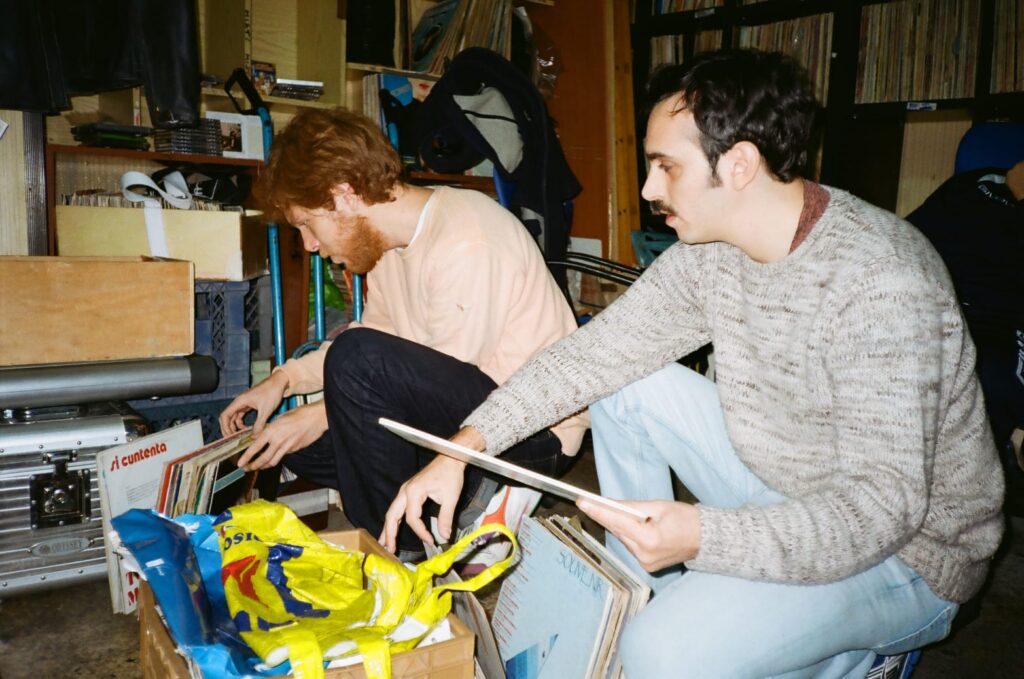
You guys are also clearly avid record collectors in addition to musicians. I heard from Ragz (Naya Beat) that you guys visit the flea market quite often to look for records?
M: Yes, indeed. We’ve spent countless hours at flea markets in Napoli. I remember there was a time when all the rare “library music” records were gone as collectors already took them all. The flea markets in Naples were left with some Italo-disco, random pop records you could find everywhere, and thousands of these unknown Neapolitan records which every seller tried to sell you for a few bucks. No one wanted the Neapolitan records back then. One day we decided to accept the offer of a seller who was getting rid of a big lot for a very cheap price. We took the records home and started to listen.
L: Most of it was really shit, but then the first cool ones appeared – and we realized that there could be more! Actually, most of that Neapolitan stuff was only distributed to small radio stations in Naples and Sicily. Italian radio stations didn’t want to play this music so it was never distributed anywhere else.
M: That was years ago, but the records are now a bit harder to find because they’re not as unknown anymore. These days we’ve realized that going record digging is also about meeting new people. The human part is maybe just as important as the music itself. When you go to a flea market, you don’t approach it like you have to find that record, but it’s more about experiencing something. You can meet people and hear their stories. When you go digging in these spots that are not written in the tourist maps, you don’t find standard people. They have stories to tell, maybe they were part of some music scene or they were not, and all of a sudden you end up speaking about how they make their best parmigiana… At the end of the day, it’s a matter of experience. That’s something you can only do by going everywhere you can, freeing yourself from all your boundaries, and just saying, “I want to go and have this experience.”

This new album seems to be another major step forward for the Nu Genea project. What’s next for the project?
M: In a moment like today, where communications are continuing to become more digital and collaborations happen frequently between computers, there is, in our opinion, a real need to facilitate face-to-face encounters. We don’t know exactly what will come up next, but what’s for sure is that we will always seek that simple, beautiful feeling of a real collaboration.
For those looking to dive deeper into Neapolitan music, can you recommend 5 (or more) essential albums / tracks?
We are happy to show you a mixture of known, and less known music from Napoli, released between the ‘70s and the ‘80s. It will include some refined jazz / jazz-rock and some dancefloor friendly records which we usually play into our sets and have somehow inspired also our own compositions.
Toni Esposito – Rosso Napoletano (1974)
Toni Esposito (later on changed to Tony Esposito) is one of the best percussionists from Napoli. Rosso Napoletano is a great instrumental album which he released in the first part of his career, before the worldwide hit “Kalimba de luna.”
Pino Daniele – Nero a metà (1980)
This is one of those albums we listened to since we were children and have never stopped listening to it…
Tonica & Dominante – Fantasticando (1979)
This is a great example of some weird holy grail from Napoli. Released on a private label, Tonica & Dominante was a female duo that only released one record, recorded on commission to please those girls that were not real singers but sisters of someone who used to work on that label. Fun fact: The instrumental tracks were created by clearly sampling drums, horns and bass takes from another Neapolitan record, previously released, called “Da Napoli a New York” from arranger Tony Iglio. We could say it’s an early example of “sampling.” Make sure to listen only to the four tracks called “Tigre,” “Gennarino o sioux,” “Cicogna,” and “Babilonia.” The rest of the album sucks haha.
Antonio Sorrentino – Antonio Sorrentino (1983)
Antonio Sorrentino was an actor and singer from Napoli. He died quite young from HIV. This album is a perfect example of Neapolitan Jazz-funk. Standout tracks are “E’ prumesse,” “Luna lù,” and “Festa a furcella” – but also other songs are worth a listen.
Bernardino – Sciummo
We’re mentioning this song because it’s a remarkable example of how Neapolitan music, especially melodies, sometimes would be relatable to some Arabic musical nuances. Neapolitan dialect and music have been strongly influenced by the Arab rule who brought the vitality of Islamic arts in the 10th century.
Aurelio Fierro – o’ Vesuvio (1967)
60s raw funk!!! Covering a Neapolitan traditional song into this dancefloor killer.
Milly – Ritmo (1989)
This is a recent discovery. Funny Italo record sung in Neapolitan dialect. “Ritmo, ‘a vita è tutta un ritmo” (“Ritmo!! Life is all a rhythm”) – that’s what she says haha. Perfect for ‘80s dancefloor vibes.med
Napoli Centrale – Napoli Centrale (1975)
We started our selection with Toni Esposito, a famous artist, and we finish our selection with Napoli Centrale, who have definitely represented Napoli for many years with their obscure jazz-rock sound. Conscious lyrics and articulated arrangements all over the place.




